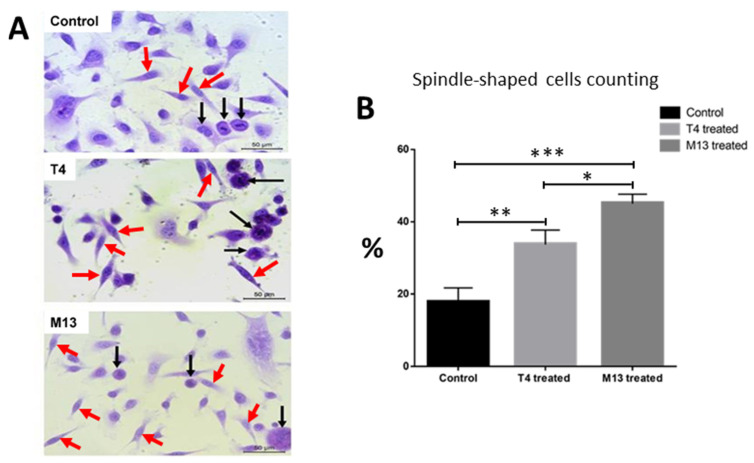Figure 1.
(A) Representative images of prostate tumor cells PC-3 cultivated on coverslips and stained with hematoxylin and eosin, which were treated for 24 h with 1 × 107 pfu/mL of either lytic T4 bacteriophage or filamentous M13 bacteriophage along with control. Untreated PC-3 cells (control); PC-3 cells exposed to the T4 bacteriophage; PC-3 cells exposed to the M13 bacteriophage. Note the presence of spindle-shaped cells (red arrows) in the phage-treated groups in contrast with round-shaped cells (black arrows). Scale bars = 100 µm; (B) spindle-like cells on the coverslips were counted per field in 10 different fields per well. Compared to control (vehicle-treated cells) T4-treated cells and M13-treated cells had a statistically significant higher number of cells with spindle shaped morphology with p < 0.01 (**) and p < 0.001 (***), respectively. M13-treated cells has also statistically significant higher number of cells with spindle-shaped morphologies with p < 0.05 (*).

